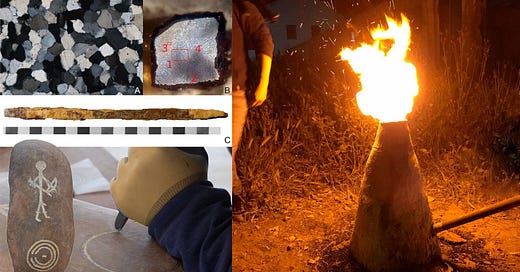In Europe, Steel Was Being Forged & Used 2,900 Years Ago
Steel tools were evidently made and in use in Europe some 2,900 years ago, according to a new study.
The researchers of the study published in the Journal of Archaeological Science1 were able to demonstrate through geo-chemical tests that the intricate engravings seen on stone stelae from the Iberian peninsula's Late Bronze Age could only have been made using tempered steel.
This was supported by metallographic examinations of an iron chisel from the sa…
Keep reading with a 7-day free trial
Subscribe to Anthropology.net to keep reading this post and get 7 days of free access to the full post archives.


